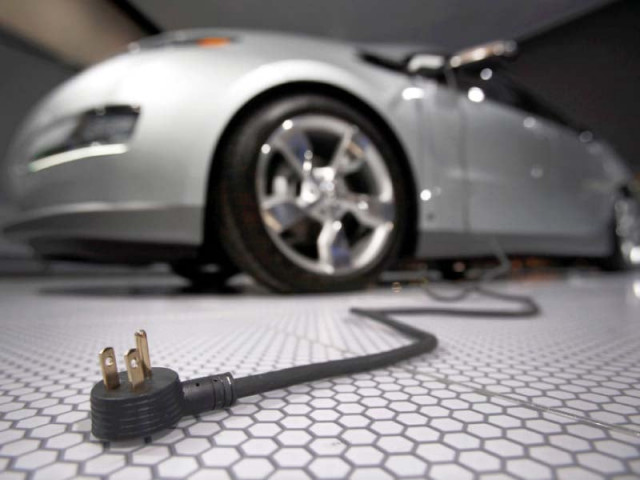EV rollout requires huge investments
Vehicles will need both charging infrastructure, greater electric-grid capacity

During several days of brutal cold in Texas, the city of Austin saw its fleet of 12 new electric buses rendered inoperative by a state-wide power outage. That problem will be magnified next year, when officials plan to start purchasing electric-powered vehicles exclusively.
The city’s transit agency has budgeted $650 million over 20 years for electric buses and a charging facility for 187 such vehicles. But officials are still trying to solve the dilemma of power interruptions like the Texas freeze.
“Redundancy and resiliency when it comes to power is something we have long understood will be an issue,” said Capitol Metro spokeswoman Jenna Maxfield.
Austin’s predicament highlights the challenges facing governments, utilities and auto manufacturers as they respond to climate change. More electric cars will require both charging infrastructure and much greater electric-grid capacity. Utilities and power generators will have to invest billions of dollars creating that additional capacity while also facing the challenge of replacing fossil fuels with renewable energy sources.
Extreme weather events add additional layers of difficulty.
“Reliability keeps you awake,” California Energy Commission member Siva Gunda said in an interview.
Rolling blackouts during a California heat wave last year prompted the state to direct its utilities to procure emergency generating capacity for this summer and to reform its planning for reserve power. The state plans an aggressive phase-out of sales of gas- and diesel-powered cars and trucks by 2035 - which, if achieved, would require vast increases in electric grid capacity.
The power and transport sectors combined make up more than half of US greenhouse gas emissions. Their simultaneous greening is considered critical for the United States - the world’s second-largest emitter behind China - to meet its obligations under an international accord to address global warming.
The goal is to power electric cars with renewable energy rather than the coal and natural gas that currently dominate the US power supply. To realise that vision, electricity from intermittent sources like wind and solar will need to be stored, probably through battery technology, so that cars can charge overnight or at other times when supply outstrips demand.
Doubling power capacity
A model utility with two to three million customers would need to invest between $1,700 and $5,800 in grid upgrades per EV through 2030, according to Boston Consulting Group. Assuming 40 million EVs on the road, that investment could reach $200 billion.
So far, investor-owned companies have plans approved for just $2.6 billion in charging programs and projects, according to trade group Edison Electric Institute.
The organisation estimates that, by 2050, the electrification of transportation and other sectors will require a doubling of US generation capacity.
‘Chicken and egg’ problems
Utilities are embracing EV sales growth as both a promising new source of revenue and an opportunity to use excess wind and solar power generated at very windy or sunny times when supply exceeds demand.
Investments in both the grid and charging infrastructure that are recovered from ratepayers could add between $3 billion and $10 billion in cumulative cash flow to the average utility through 2030, according to Boston Consulting Group. The forecast also includes potential revenues from new products outside of utilities’ regulated businesses, such as customer fleet routing or charging station maintenance.
The revenue opportunity is still nascent, however, with EVs making up less than 2% of all vehicles registered in the United States. And utilities must invest in infrastructure now for consumers to feel secure in their purchase of an EV, said Emily Fisher, general counsel of utility trade group Edison Electric Institute.
“There is definitely a chicken-and-egg situation with charging infrastructure,” she said.
Automakers bet big on EVs
Major US automakers General Motors and Ford have announced large investments in EV development to keep pace with electric-car pioneer Tesla Inc and to prepare for the prospect of tougher emissions regulations. EV share could grow to 15% by 2030, according to US Department of Energy forecasts.
The electricity to power all those cars is expected to come primarily from renewable energy sources and natural gas, according to NREL. Even if natural gas generation increases to support electrified transportation, overall emissions are projected to decline, the organisation said.
Published in The Express Tribune, March 7th, 2021.
Like Business on Facebook, follow @TribuneBiz on Twitter to stay informed and join in the conversation.


















COMMENTS
Comments are moderated and generally will be posted if they are on-topic and not abusive.
For more information, please see our Comments FAQ